
Iranian artist Arghavan Khosravi
In our ongoing online series, renowned art consultant Maria-Theresia Mathisen profiles rising contemporary artists to watch in 2021. Here, she speaks to New York-based Iranian artist Arghavan Khosravi about the power of visual metaphors, juxtaposing imagery and how her work reflects on her experiences of growing up in Iran

Maria-Theresia Mathisen
Arghavan Khosravi’s work is not only visually compelling but also loaded with socio-political commentary. I discovered her work in late 2019, a few months before the pandemic, on Instagram and was immediately taken by it. Bright colours and smooth skin are juxtaposed with uncanny elements such as ankle bonds, bombs, fragments of sculptures, shattered structures, ropes and keys. There are recurring symbols for censorship, such as locks, masks and bonds, reflecting the artist’s experience of growing up in Iran.
Follow LUX on Instagram: luxthemagazine
Over time, I noticed that her compositions are becoming increasingly complex, and her paintings more and more sculptural. Arghavan is very ambitious and curious, constantly developing her practice, as if she is trying to solve a problem, or perhaps find a solution to some of Iran’s, or even the world’s problems.
To me, Arghavan’s work feels extremely important right now as it tackles human rights issues with a particular focus on the oppression of women in autocratic systems.

Arghavan Khosravi, The Key, 2021. Courtesy the artist and Rachel Uffner Gallery
LUX: You are born and raised in Iran. When did you move to the US and why?
Arghavan Khosravi: I was born in Iran and spent almost my whole life there. In 2015, I came to the US to go to graduate school.
LUX: Was it a culture shock?
Arghavan Khosravi: To be honest, I didn’t face that much of a culture shock. I think nowadays, with globalisation and the internet, people from all over the world that are coming from similar cultural classes and generations have lifestyles that are not hugely different. The only thing that I can think of, which still wasn’t a culture shock, but a huge difference (and relief) was that in the US I could wear whatever I want in public; there was no more compulsory hijab (which is an unjust law for women in Iran).

Arghavan Khosravi, Connection, 2020. Courtesy Carl Kostyál Gallery
LUX: You have four degrees, two from Iran and two from the US. Why did you choose to do both undergrad and graduate degrees again in the US?
Arghavan Khosravi: I actually have three degrees. I got my BFA in Graphic Design and MFA in Illustration both in Tehran. After being a graphic designer for almost 10 years I decided to pursue my dream of becoming a painter and moved to the US, but since I didn’t have much professional or academic experience in that field, I decided to apply for a one-year non-degree post-bacc program in studio arts at Brandeis University (Waltham, Massachusetts). Over the course of that one year, I could make a body of work which enabled me to apply to a few graduate programs. Eventually, I ended up in Rhode Island School of Design’s graduate painting program.
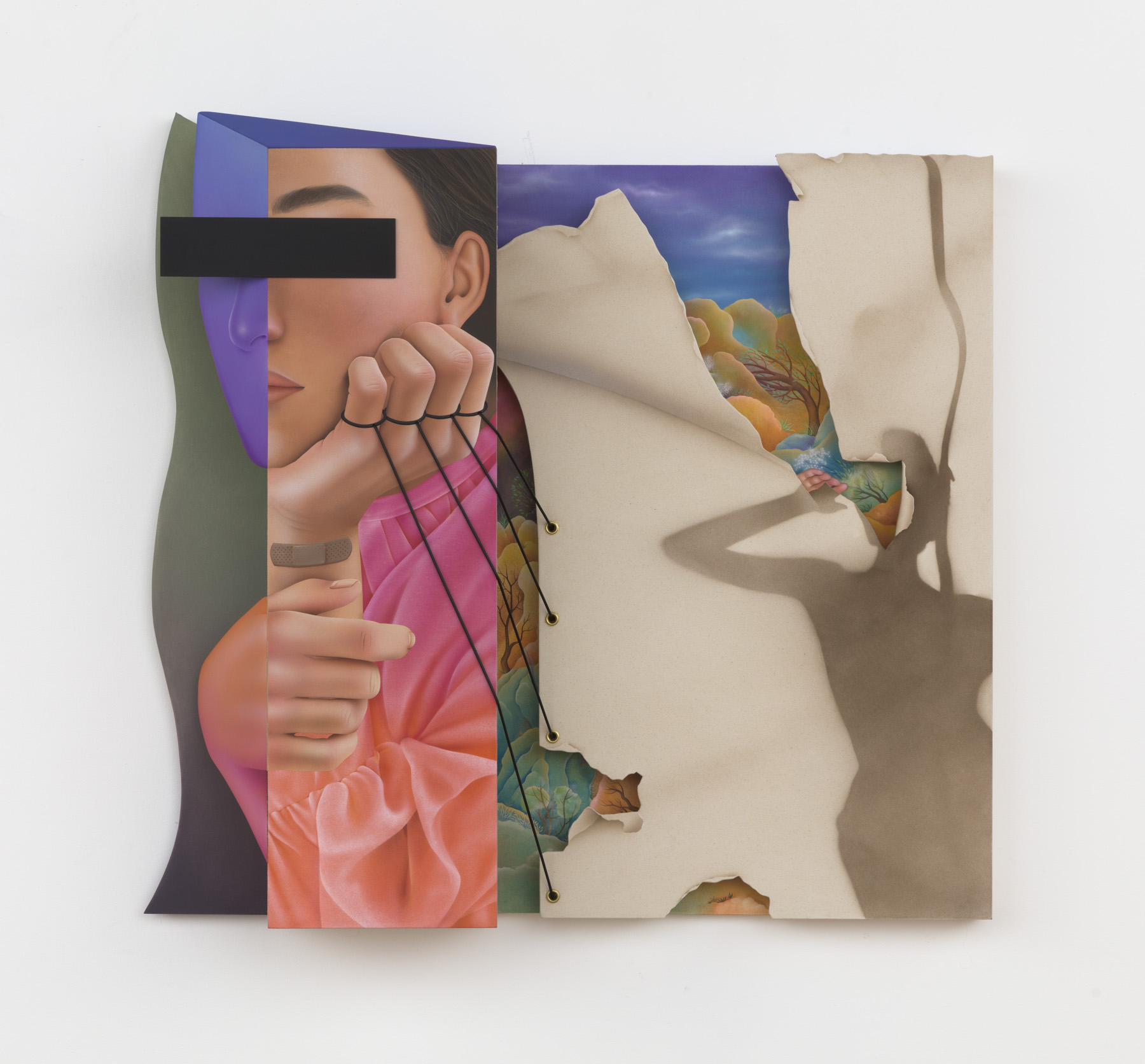
Arghavan Khosravi, On Being a Woman, 2021. Courtesy the artist and Rachel Uffner Gallery
LUX: Your earlier work from 2016 is heavily influenced by Iranian miniatures, but your style seems to have evolved a great deal in the past few years. What were the museums you visited the most upon coming to the US and which of them provided new sources of inspiration?
Arghavan Khosravi: Persian miniature paintings have always been one of the main sources of inspiration for me. Every time I look at them, I get inspired by one aspect of these works, whether it’s their mesmerising colour palette; their compositions; the way figures are depicted (there’s not much facial expression and the expressive qualities are heavily dependent on their poses and body language); or the way architectural spaces are depicted so that there’s no perspective and no vanishing point, which has a flattening effect. When I place figures that are rendered realistically into that unreal space, the juxtaposition gives a sense of distortion and displacement which can be read metaphorically too. The more I focused on this aspect of the paintings, the more I got involved with building shaped panels (instead of the regular rectangle) to emphasise these architectural elements of the space. This helped the paintings to increasingly exist as a 3D object rather than a 2D surface, which opened a whole new door for me and led me to experiment with different ways to explore three dimensionality in the paintings.
Unfortunately, over the past year I haven’t been able to visit museums due to the pandemic, but when I look back at the few years before that, a few museum exhibitions stand out. One of them was a retrospective of Jim Shaw’s works at the New Museum in New York in 2015 and another exhibition of his works a few months later at MASS MoCA in Massachusetts which truly fascinated me. The way he’s always exploring new different ideas and his never-ending creativity was very inspiring for me. The other inspiring museum exhibition that I can think of was David Hockney’s at the Met in 2017. One of the most inspiring aspects of his works for me was colour.

Arghavan Khosravi, Isn’t it time to celebrate your freedom?, 2021. Courtesy the artist and Rachel Uffner Gallery
LUX: Your work fluctuates between pop, symbolism and surrealism. Which genre, if any, do you feel most comfortable being associated with?
Arghavan Khosravi: I can mostly relate my work to the surrealist movement and I think symbolism is one of the tools in surrealistic storytelling. In my paintings, I like to depict moments that might be impossible to happen in real life. I also use an indirect and subtle approach to convey what I have in mind. This approach slows the audience’s reading of each painting and hopefully, leaves a more effective and longer lasting impression on them.
Read more: Philip Hewat-Jaboor on discovering art through materials
LUX: Can you tell us about some of the recurring objects in your work such as strings, disembodied limbs and floating heads. What do they represent for you?
Arghavan Khosravi: In general, I am interested in depicting scenes and situations that at the first glance, might seem peaceful, normal and comfortable, but the more you look at what’s going on, you find moments where something dark and slightly violent is occurring. The body fragments, for example, give a feeling that the characters in the painting are lacking control not only over the situation, but also their own body. You can look at it as a metaphor for the suppression which happens under autocratic systems.
Another metaphor I use for suppression is the red string. I am thinking about all the “red lines” that are drawn which mustn’t be overpassed. These lines can be drawn systematically by an authoritarian regime or can be drawn by tradition in more patriarchal societies, which mostly, target women. I am mostly interested in using visual metaphors that don’t look too violent at first, but present an underlying sense of suffocation or disturbance.
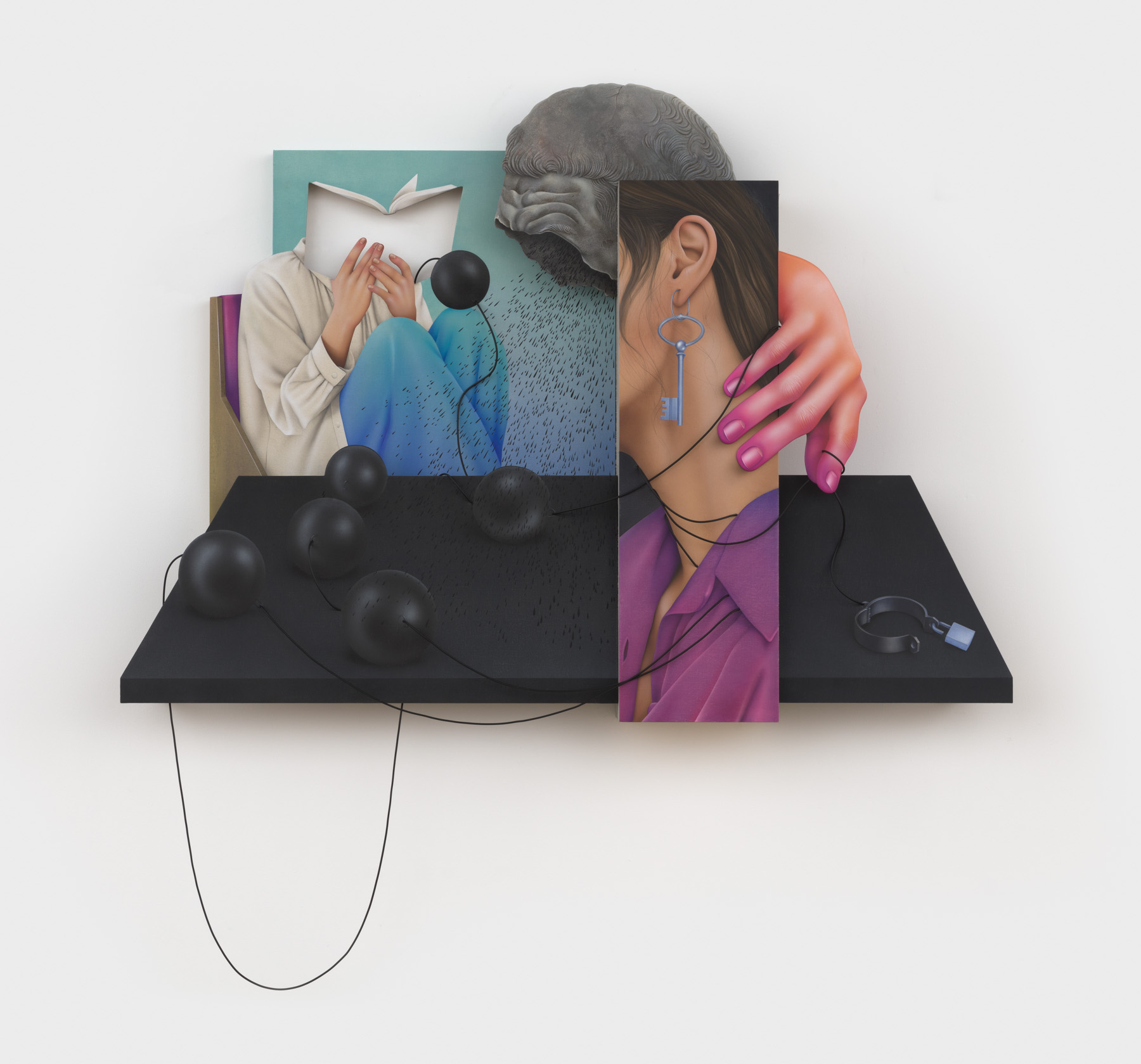
Arghavan Khosravi, Black Rain, 2021. Courtesy the artist and Rachel Uffner Gallery
LUX: You seem to like adding sculptural and three-dimensional elements to your paintings, and often use a shaped canvas. Do you start a painting knowing that you will use a shaped canvas or do you sometimes change the shape after starting a painting?
Arghavan Khosravi: The sculptural elements started when I decided to experiment with shape panels, which I talked about earlier, I stretch canvas over the shaped wood panels, so it’s almost impossible to change its shape after I start a painting. Therefore, I pre-plan most of the painting before building the shaped panel, and I have a clear idea what imagery is going to be painted within that shape.
LUX: Another formalist aspect of your work is the ‘trompe l’oeil’ technique, which sometimes makes it difficult to delineate what’s painted and what’s not.
Arghavan Khosravi: I am interested in the idea of juxtaposing a two dimensional painted surface which mimics three-dimensionality with actual three dimensional elements in the paintings. I like how it can invite the viewer to explore more time with the piece in order to figure out which part is which. I am also interested in the notion of duality and having contrasting visual elements. This contrast can be in materialistic aspects of the paintings (like the contrast between a 2D surface and a constructed 3D element) or it can be more about the subject matter. For example, the juxtaposition of imagery appropriated from an Eastern context beside Western, or the contrast can be historic versus contemporary and so forth.
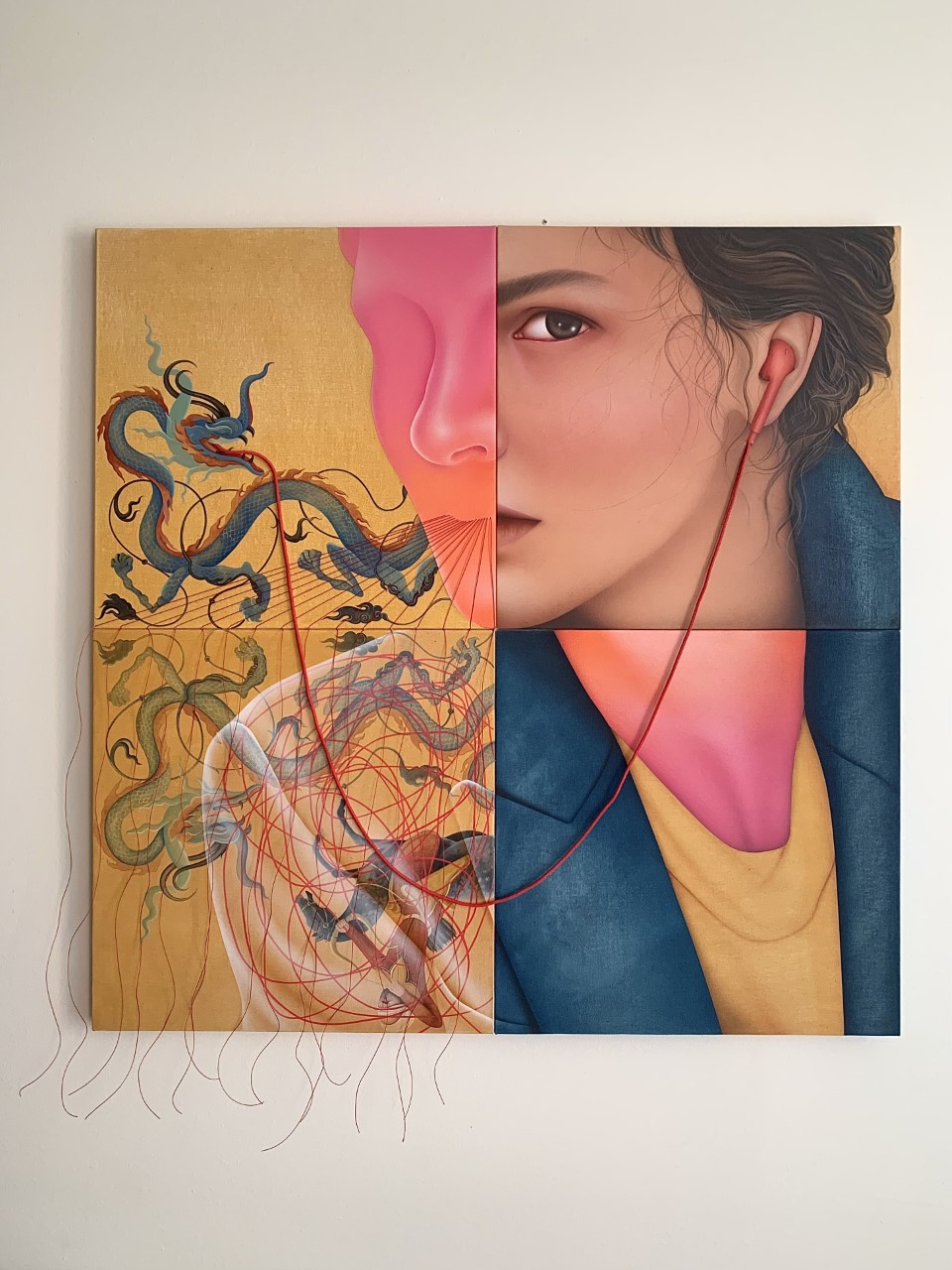
Arghavan Khosravi, Entrapment, 2021. Courtesy Carl Kostyál Gallery
LUX: In one of your works the red string is physically wrapped around a canvas so that you can see dents at the edges. How did you do it?
Arghavan Khosravi: To achieve that effect, before stretching the canvas over the wood panel, I carved the sides of the wood panel in a way which makes the hard surface of the panel look like a soft smooth material that’s being compressed when a rope is tightly wrapped around it. This approach again aligns with the notion of duality and contrast that I talked about in the previous question. This time it’s the contrast is between a soft and a hard material.
Read more: Uplifting new paintings by Sassan Behnam-Bakhtiar
LUX: Another Iranian artist that works a lot with trompe l’oeil is Mehdi Ghadyanloo. Do you know his work?
Arghavan Khosravi: Yes, I am very much familiar with his work and really like it. I first encountered his work when he used to make large murals all over Tehran where I grew up and was living before immigrating to the US. It was so fascinating to see his creative ways to give the illusion of depth and space in his murals so that the 2D painted surface of the wall seemed like the continuation of the actual buildings and space surrounding it. Before him (with a few exceptions), most of the murals were at the service of the state propaganda or had ideological purposes.

Arghavan Khosravi, The Balance, 2019. Courtesy the artist.
LUX: Who are your favourite Iranian artists that deserve more attention in the West?
Arghavan Khosravi: One Iranian artist that comes to mind is Bahman Mohasses. I also really like Nazgol Ansarinia’s work.
LUX: Born soon after the Islamic Revolution, you witnessed Iran’s transformation from a Western-friendly monarchy into a suppressive theocratic republic. How did you experience this growing up and what did your parents teach you?
Arghavan Khosravi: I was born and grew up in a non religious family, so there was a more secular/liberal way of thinking and living, but when I stepped out of that ‘private space’ into the ‘public space’ I could see that everything was very different. So, like so many other Iranians, I was taught by my parents how to navigate this dual life from an early age. For example ,there were certain things we did at home that mustn’t be mentioned at school, or we did things at school that I personally didn’t really believe in like saying prayers with other students which was compulsory in my middle school. Or we had to pretend to abide by some rules in public, which we don’t really believe in, such as the compulsory hijab. I think the notion of duality that I’m exploring in my paintings is a result of reflecting on those life experiences and memories from Iran.

Arghavan Khosravi, Fragility of Peace, 2019. Courtesy the artist
LUX: In your 2017 Muslim Ban series you use pages of your Iranian passport as a canvas and there’s also your Self-Censorship series. Can you tell us more about those works?
Arghavan Khosravi: In early 2017, only a week after I came back from a short trip to Iran during the school’s winter break, an executive order was signed which prevented citizens of six muslim-majority countries from entering the US. It meant that if I had returned to the US a week later, I could have got stuck in Iran and wouldn’t have been able to finish my degree. Also, it meant that I wasn’t able to exit the US for an unknown period of time. My first reaction to the news was anger and a feeling of being treated with disrespect. I thought of using this anger as fuel in my studio, but the blank canvas didn’t feel right. So I had this idea of painting on pages of my expired passport and weaving my narrative into the visual structure that was already there.
When you grow up under the suppression of an autocratic system which limits freedom of speech, you start to develop self-censorship as a defence mechanism, and sometimes you’re not even aware of it. Therefore, you start to suppress your own freedom of expression to avoid getting in trouble. In the Self-Censorship series I was interested in exploring these themes using a symbolic language. It is worth mentioning that symbolism itself can be one of the tools to circumvent censorship because when you use symbols and metaphors to convey certain thoughts you can always say that this particular thought is the viewer’s interpretation of your work and not necessarily your own idea. But of course when I use symbolism now, where I have freedom of expression, I have different reasons for this choice.

Arghavan Khosravi, Hafez (The Muslim Ban Series), 2017. Courtesy the artist
LUX: Your paintings are so intricate they seem very laborious to produce. How long does it take you, on average, to finish a painting and do you work on multiple paintings at the same time?
Arghavan Khosravi: Depending on the size, it takes me about 2 to 5 weeks to finish each piece. Usually, the paintings with 3D elements and multi-panels take longer because there is more than one surface to paint on. I rarely work on several paintings at the same time because if I leave a painting unfinished and move to a new one, I get very excited about the new piece and won’t feel like going back to the older piece. I have works lying in my studio from two years ago that are still left unfinished.

Arghavan Khosravi, Four Elements, 2021. Courtesy the artist and Rachel Uffner Gallery
LUX: Finally, tell us about your current show In Between Places at Rachel Uffner Gallery in NYC. How do you think your practice has evolved or changed since your last show in NYC at Lyles & King in 2019?
Arghavan Khosravi: This latest body of work was made in isolation during the past year of quarantine. The works build upon my previous explorations of techniques taken from historical painting genres, such as the use of stacked perspective in Persian miniature paintings, while also incorporating new sculptural and three-dimensional elements that further emphasise qualities of illusion and artifice. The paintings are rendered on surfaces that have been layered to create visual depth, which somehow evoke the structure of a theatrical set and the corresponding implication of a not-quite-real world built on false appearances.
“Arghavan Khosravi: In Between Places” runs until 5 June 2021 at Rachel Uffner, New York. For more information: racheluffnergallery.com
Arghavan Khosravi’s solo exhibition at Carl Kostyal, London opens in June. For more information, visit: kostyal.com/exhibitions



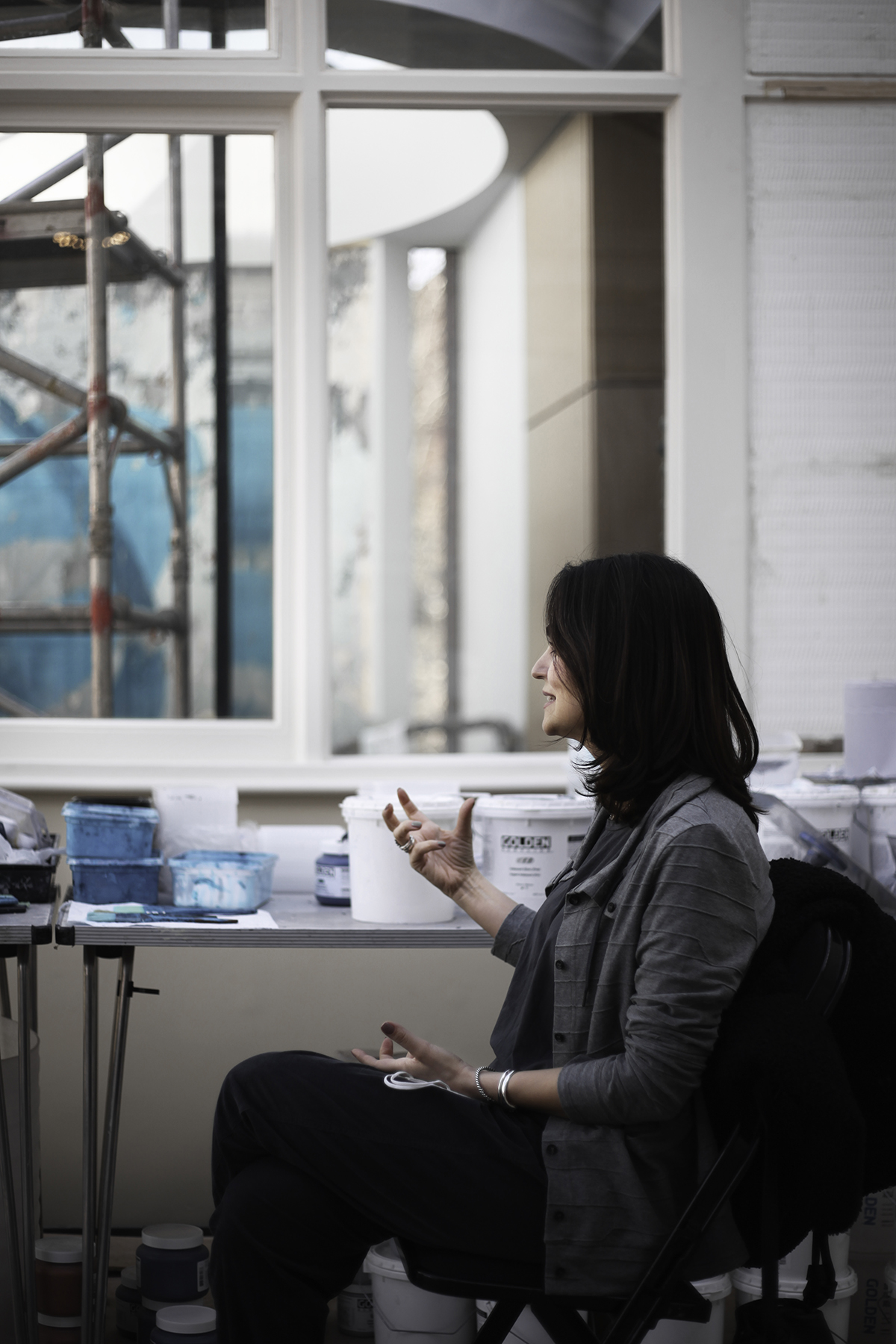


















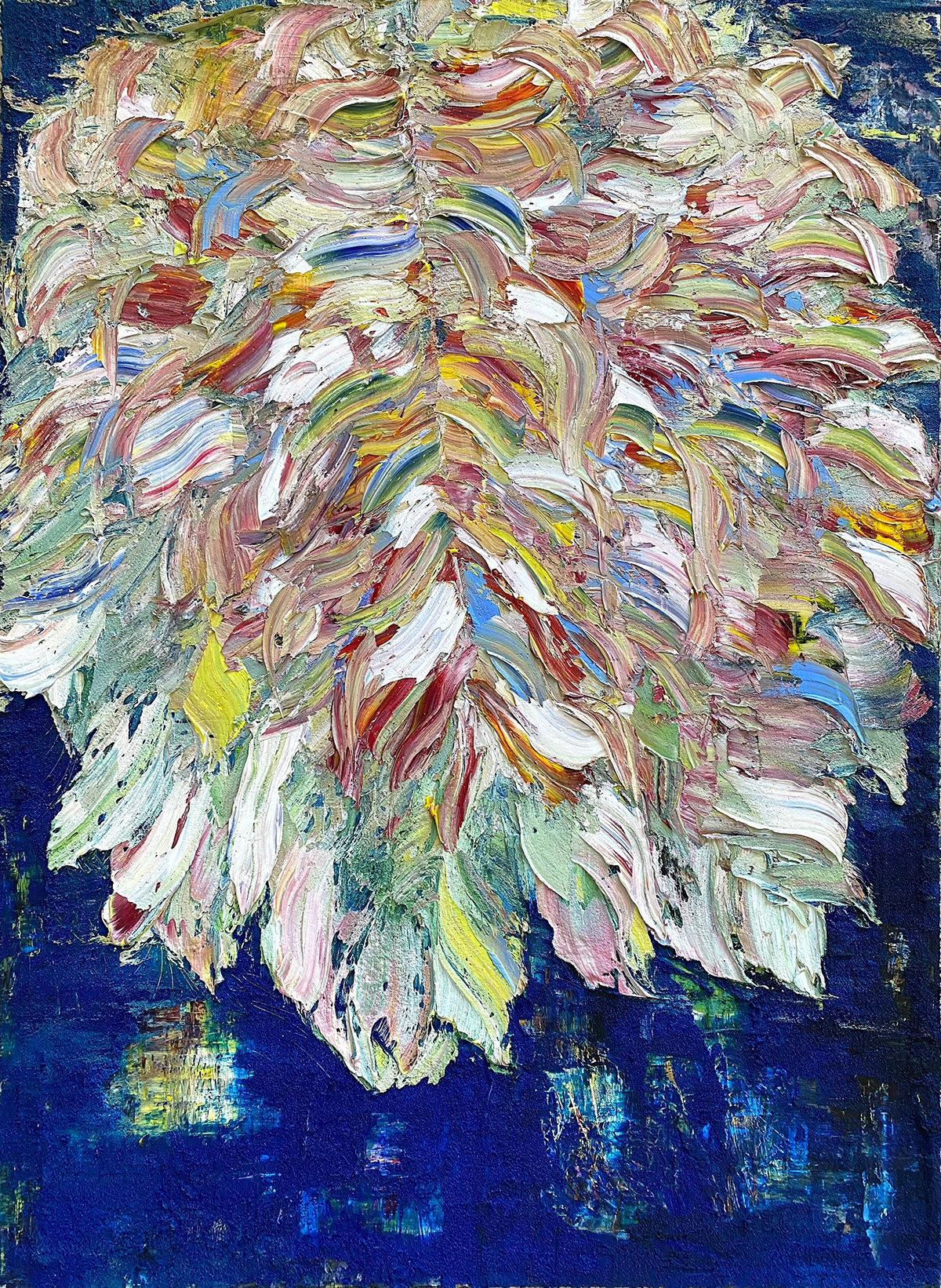





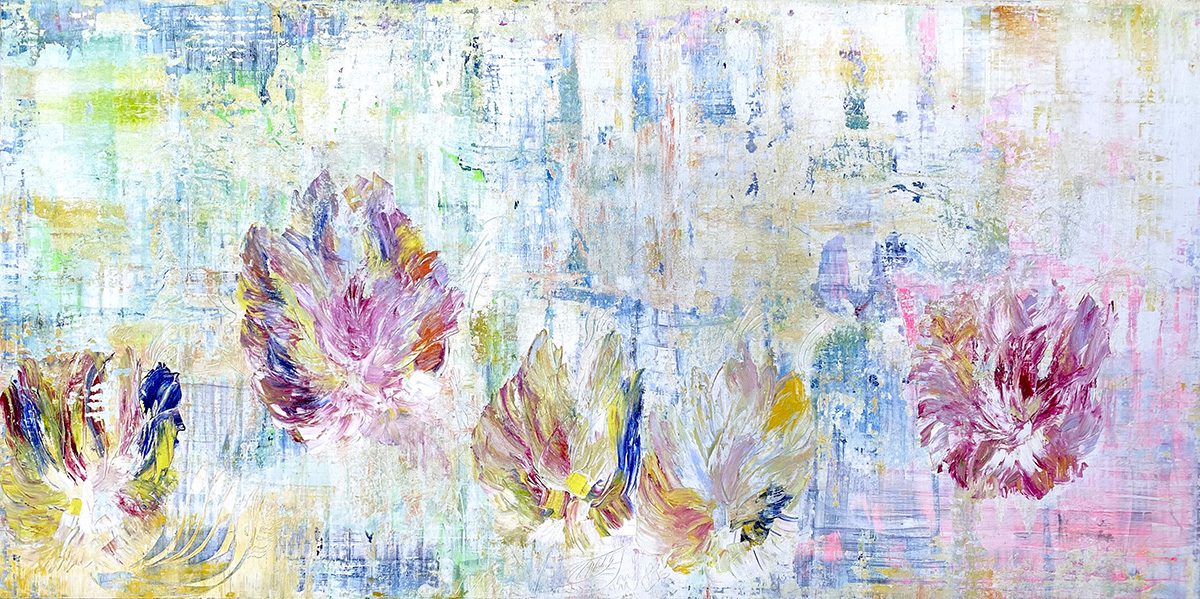









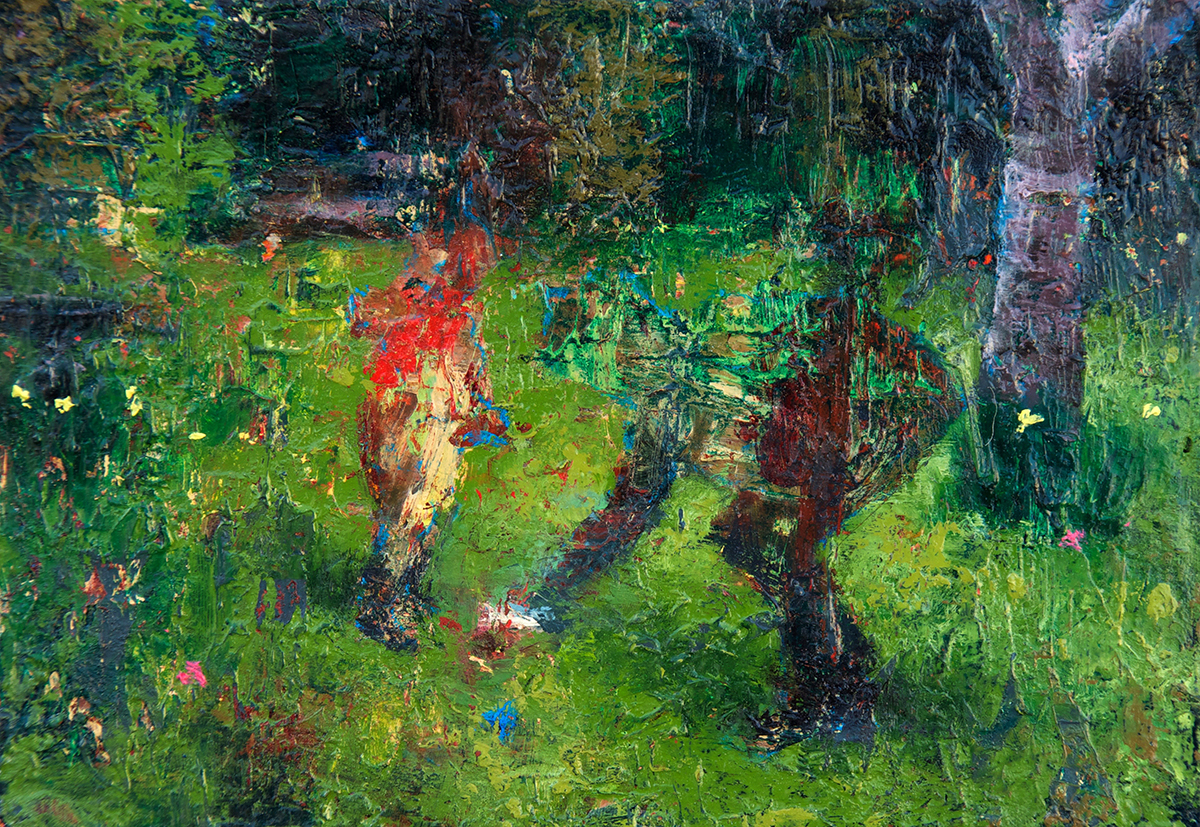



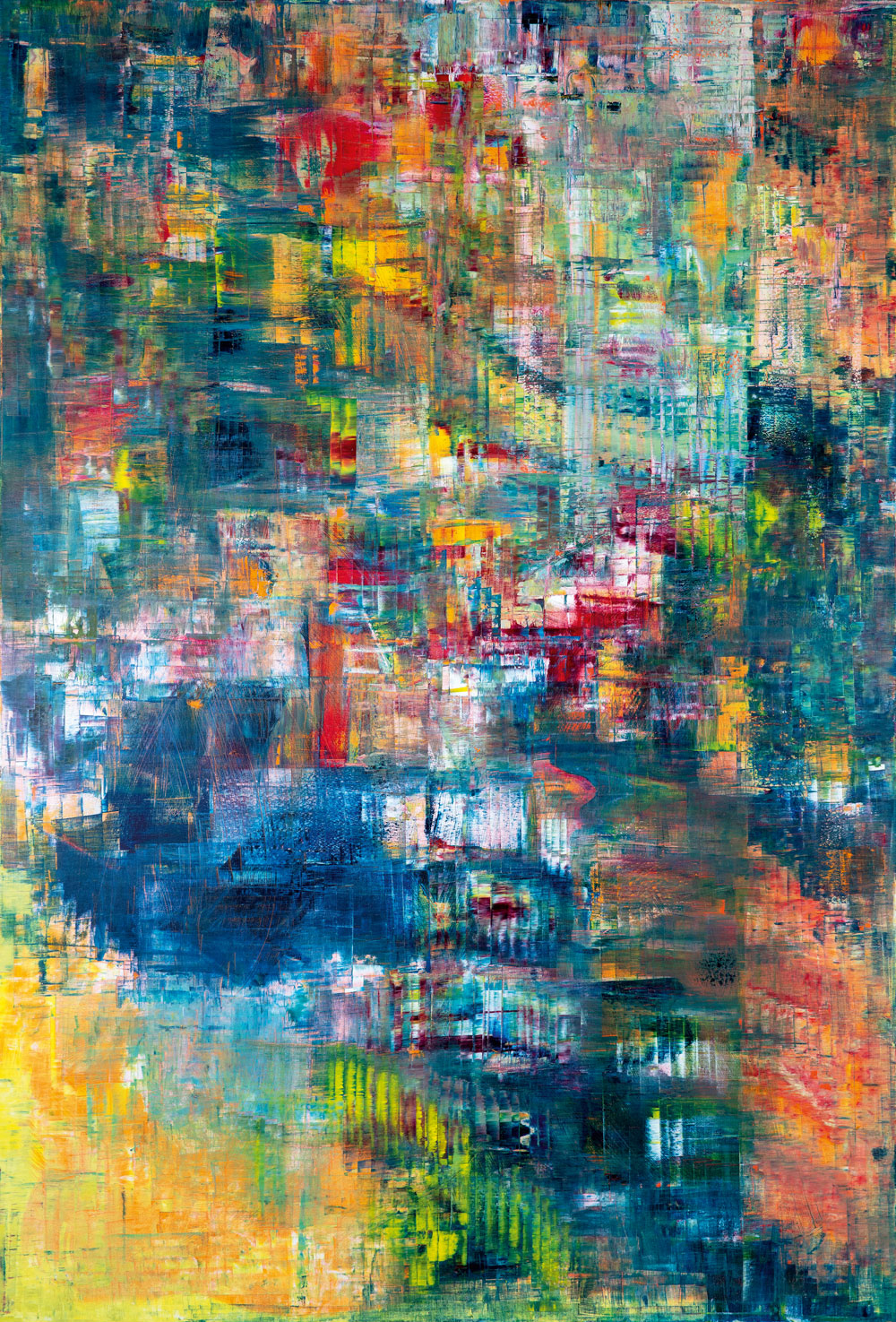










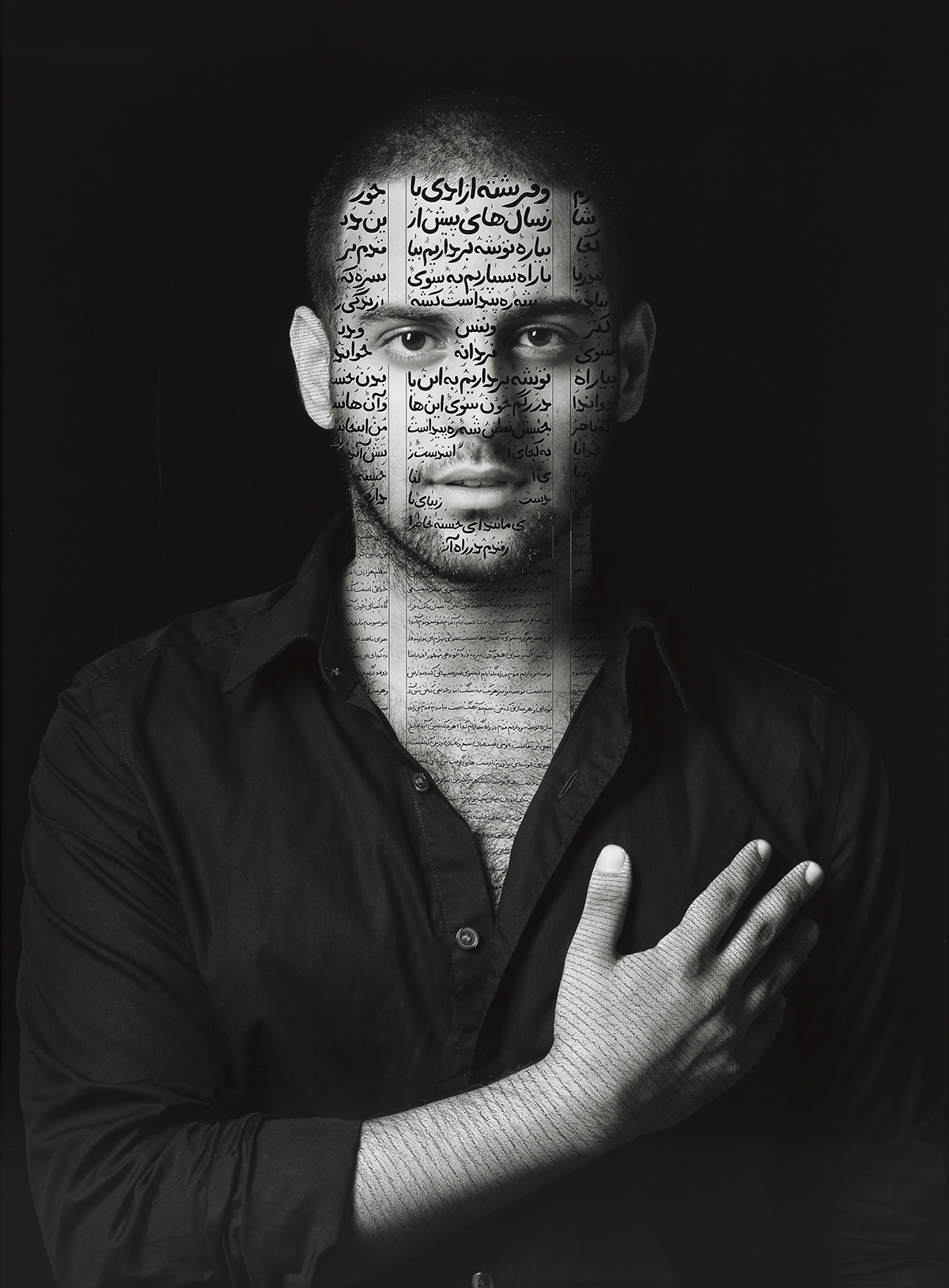


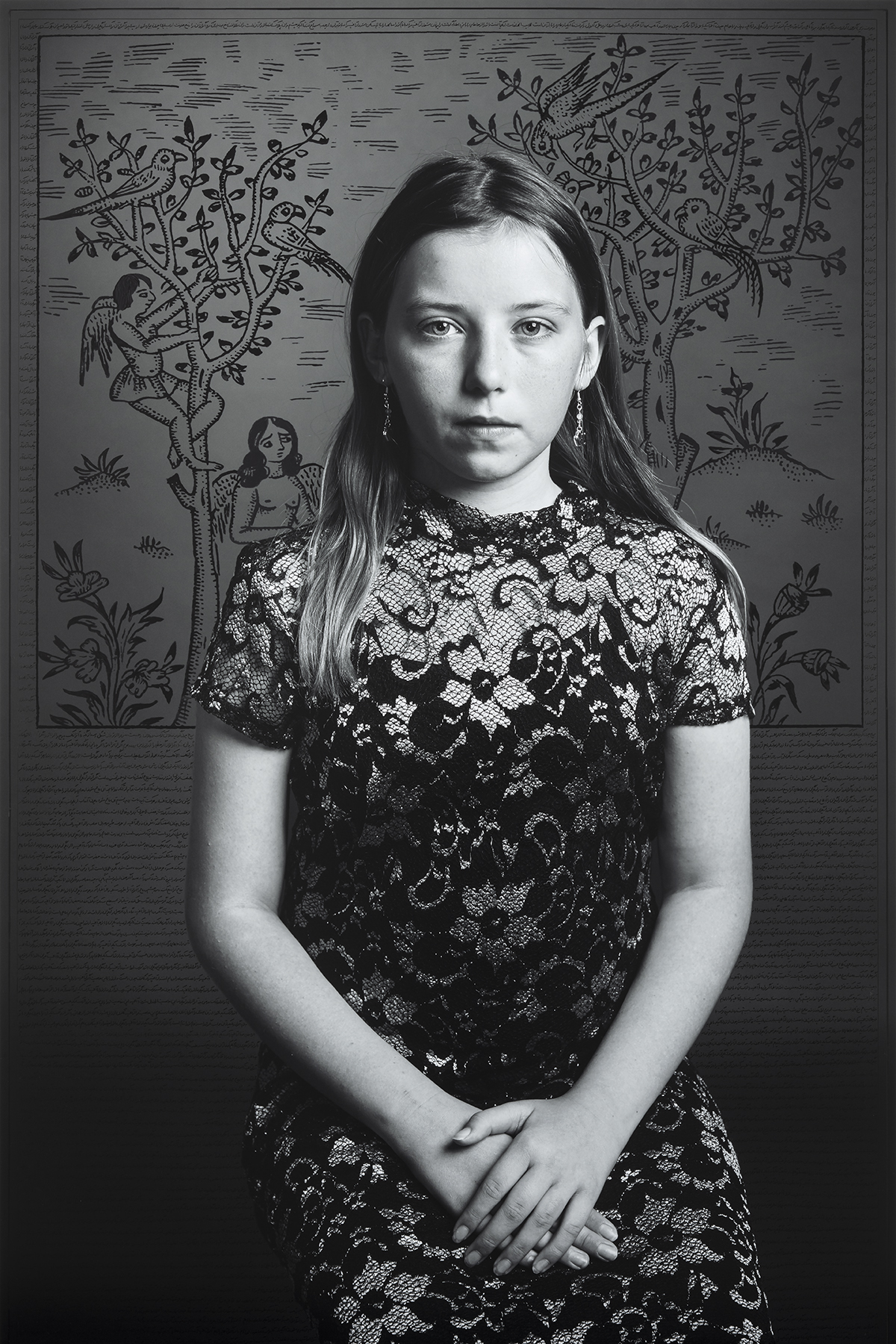

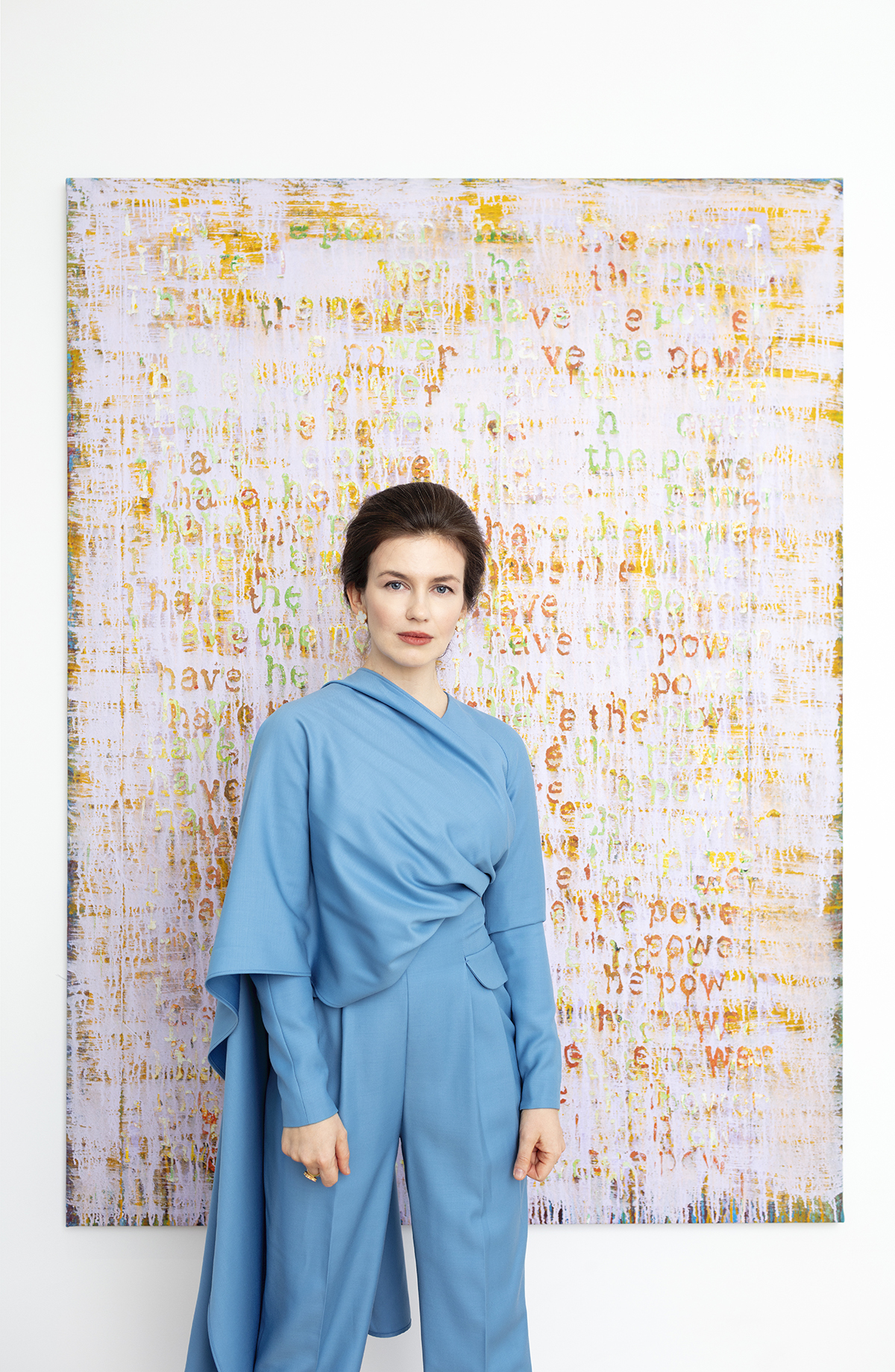

 Monaco offers a particular segment to the European art market. “It boasts highly influential residents and visitors who provide the perfect platform and exposure for our artists,” adds Maria. “And, for generations, the Prince’s family in addition to the government of Monaco have been great supporters of the arts.” Anyone who knows the city will be familiar with its buzzing social life, its numerous galas, operas, ballets and art exhibitions. “It’s wonderful that we will now be a part of this exciting agenda,” adds Maria. “It’s a place where you can really foster connections.”
Monaco offers a particular segment to the European art market. “It boasts highly influential residents and visitors who provide the perfect platform and exposure for our artists,” adds Maria. “And, for generations, the Prince’s family in addition to the government of Monaco have been great supporters of the arts.” Anyone who knows the city will be familiar with its buzzing social life, its numerous galas, operas, ballets and art exhibitions. “It’s wonderful that we will now be a part of this exciting agenda,” adds Maria. “It’s a place where you can really foster connections.”
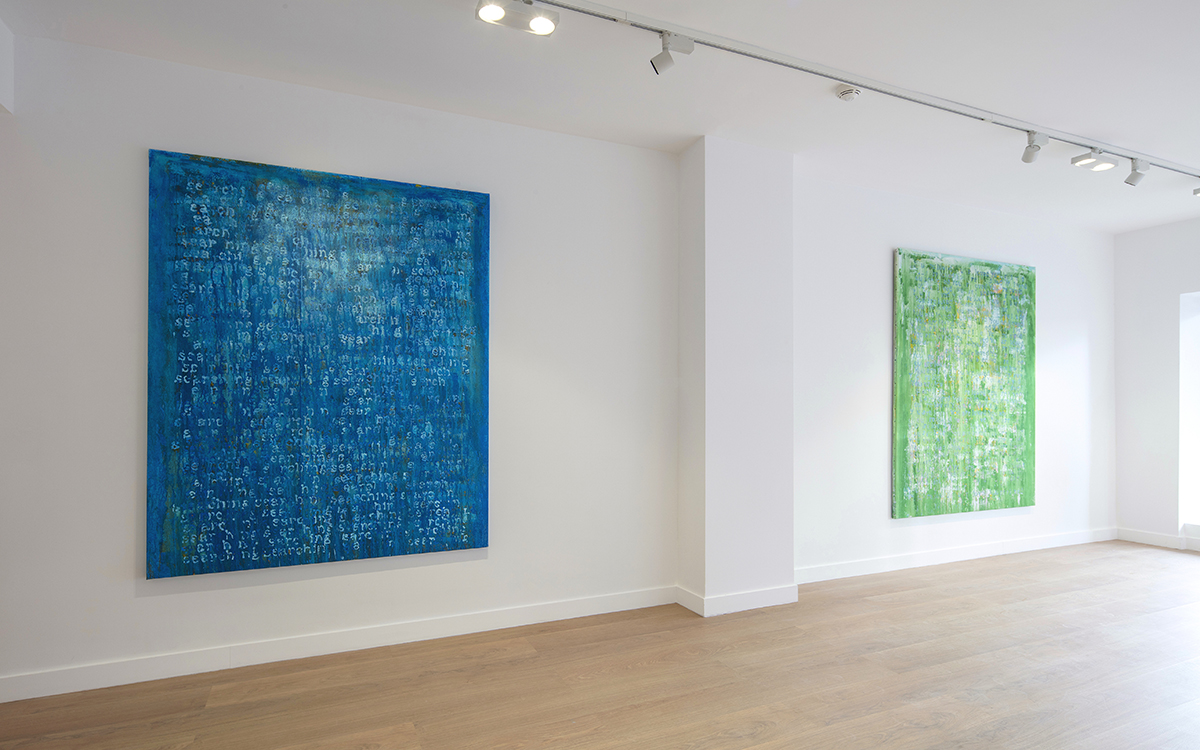
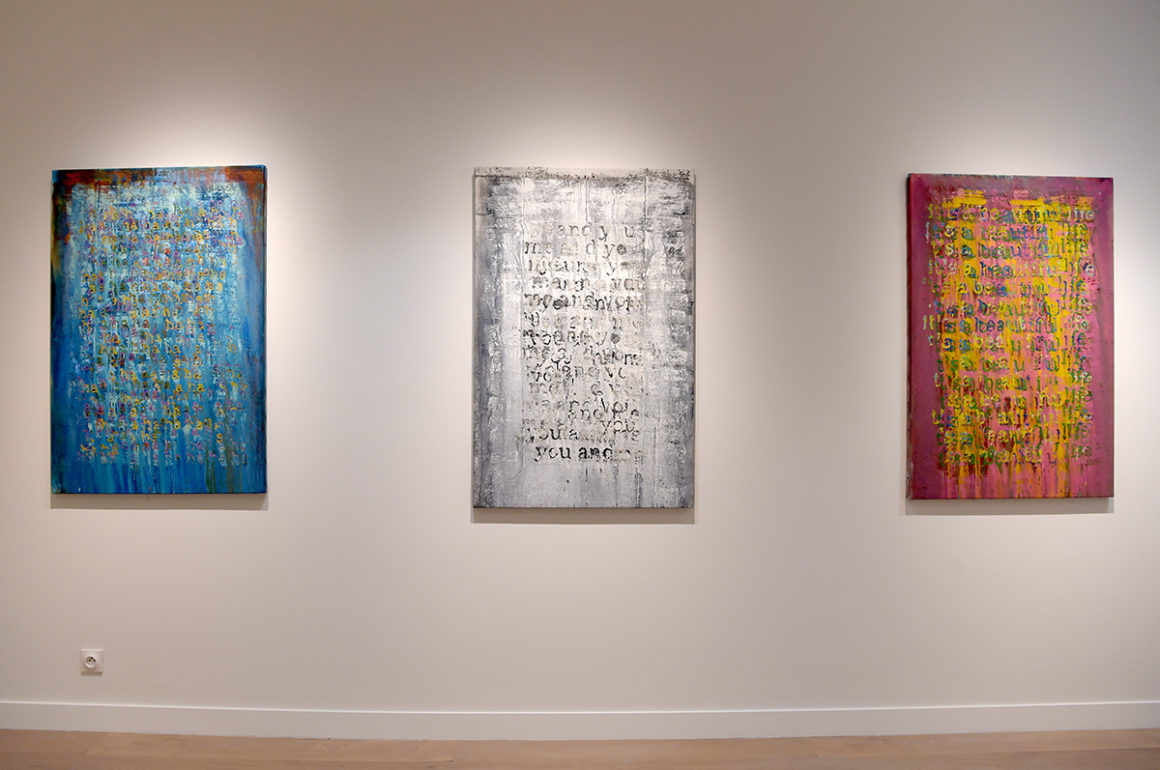

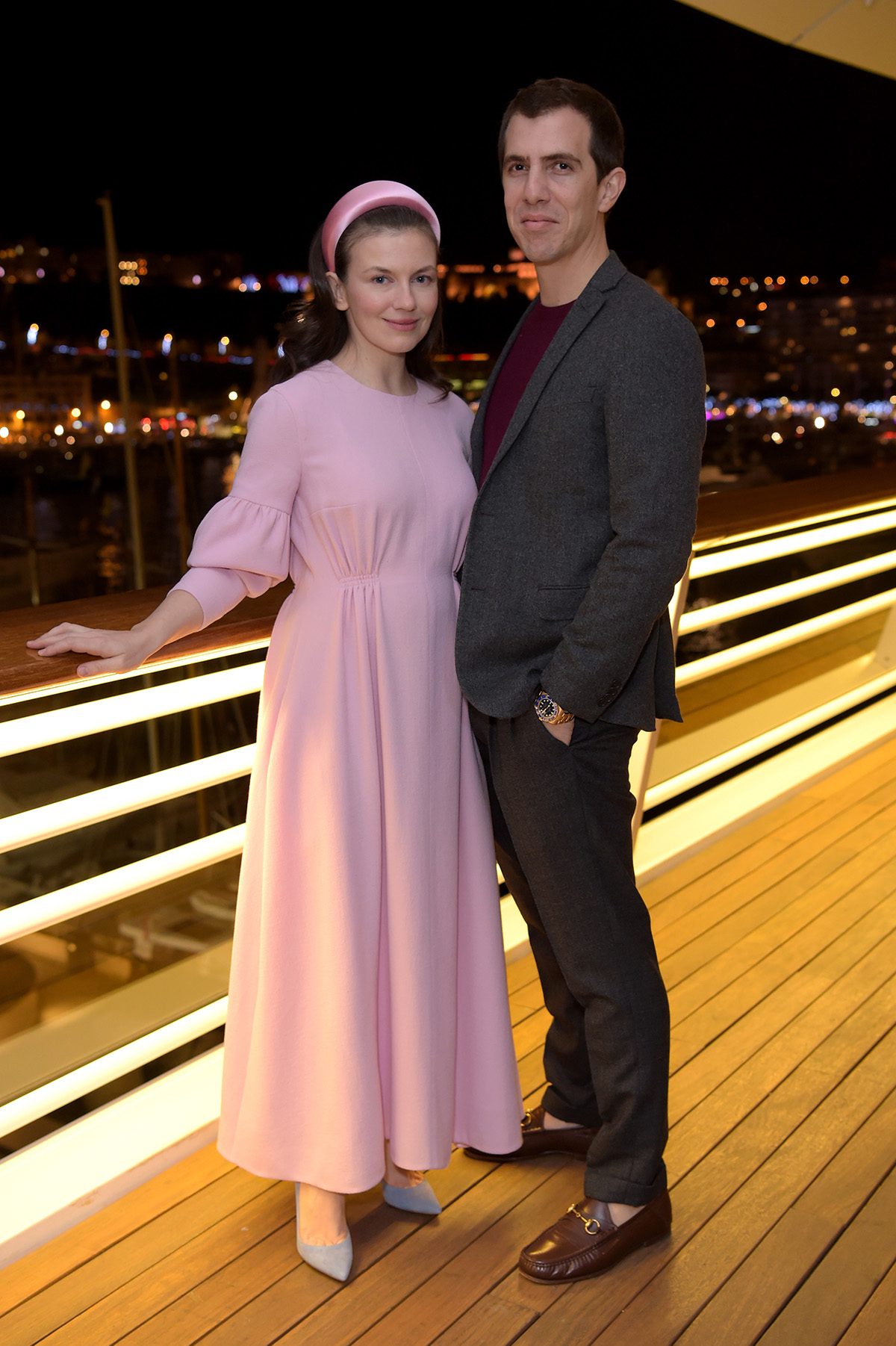
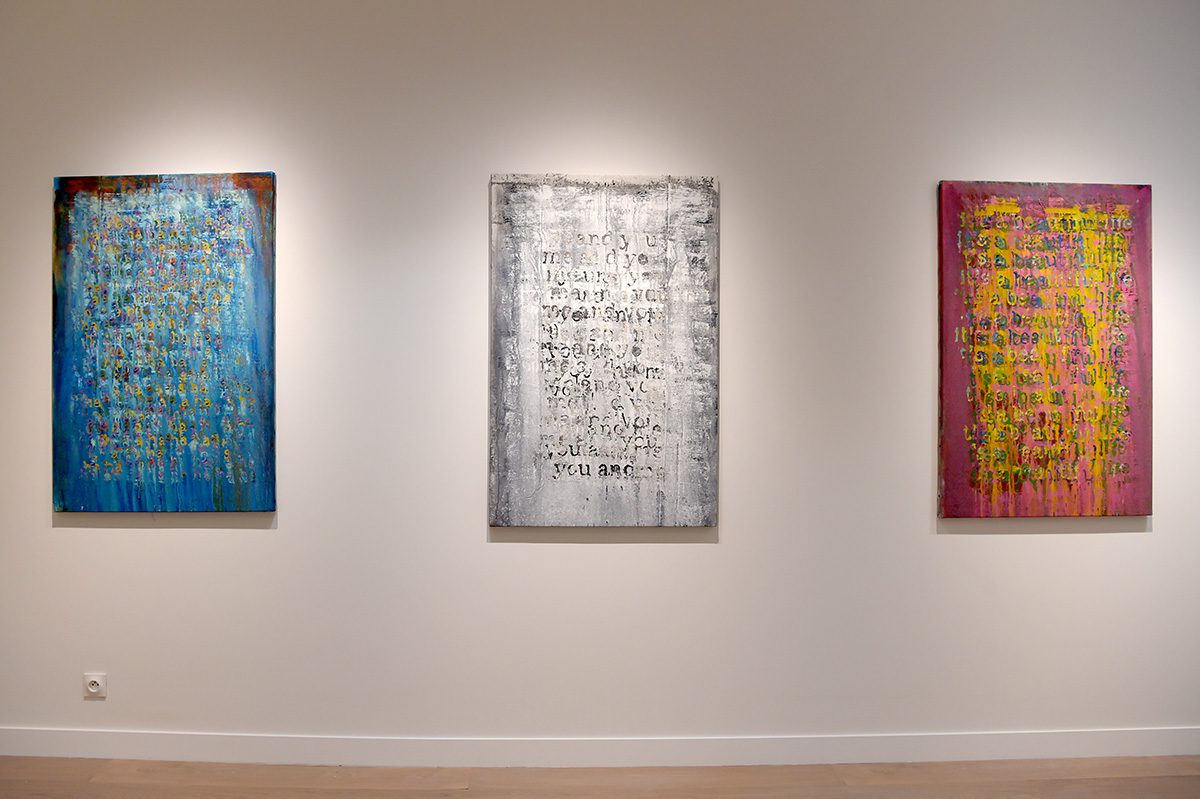

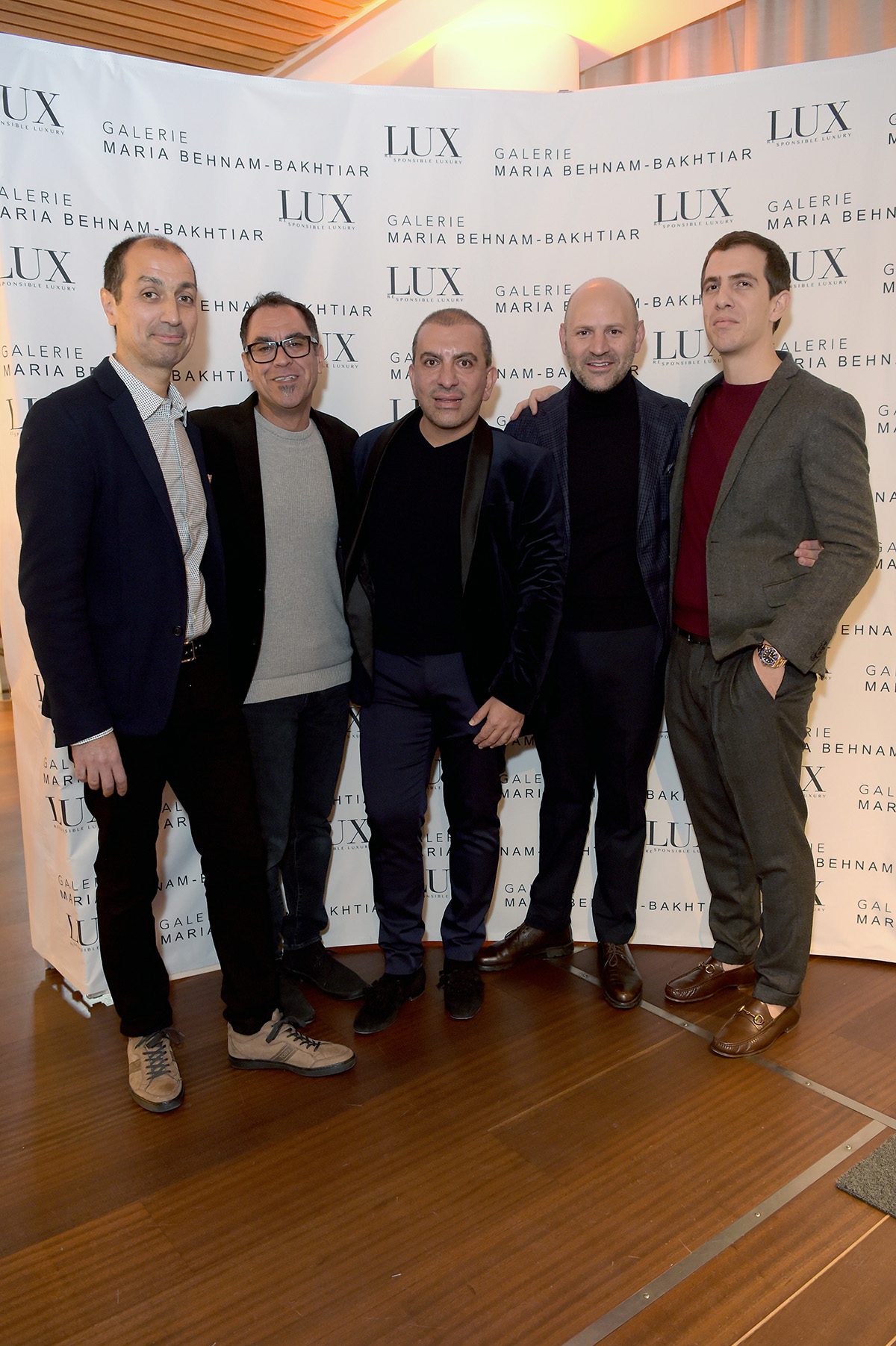













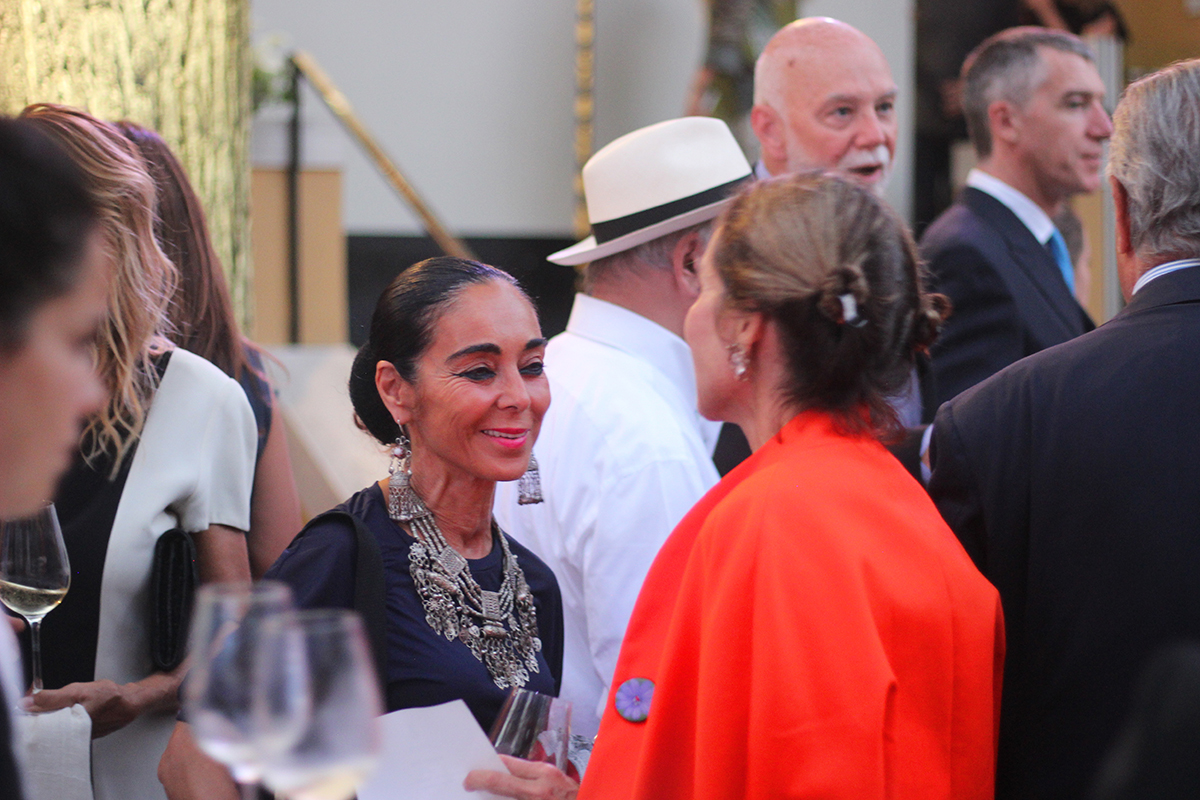

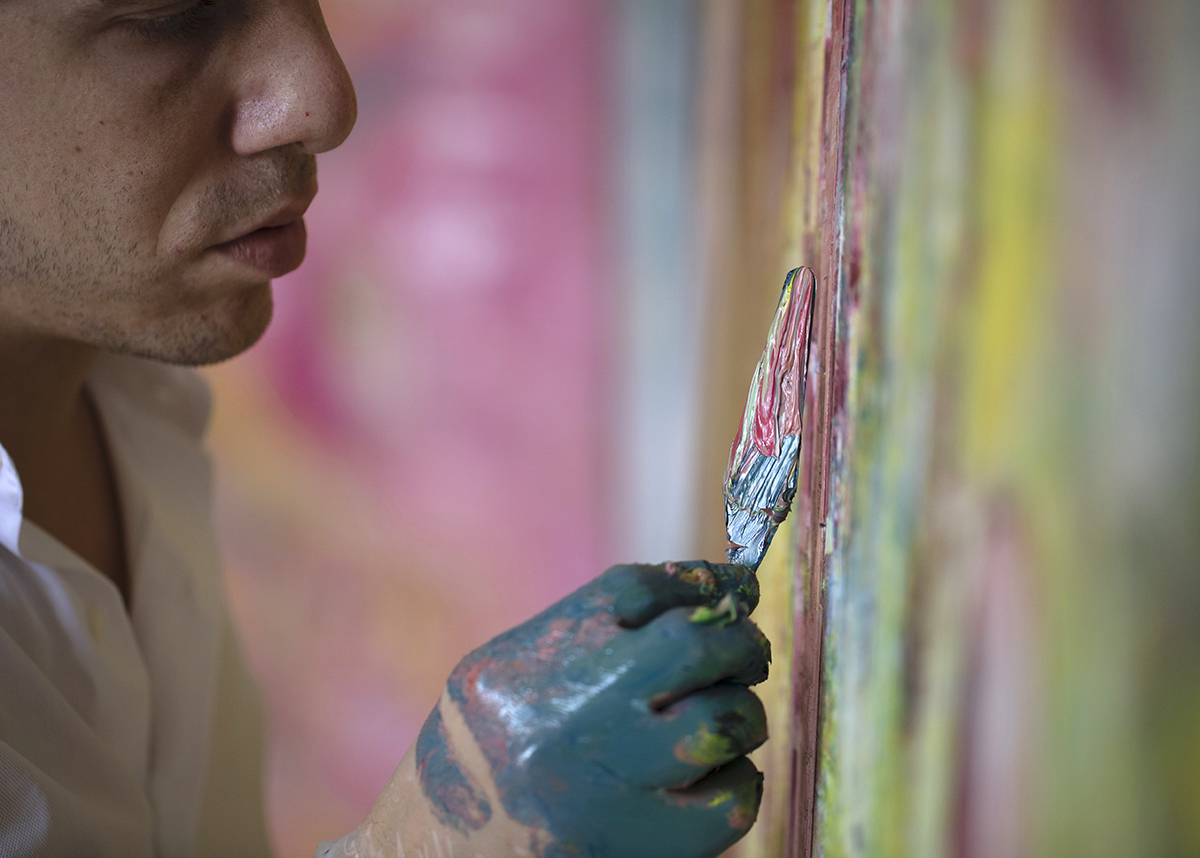








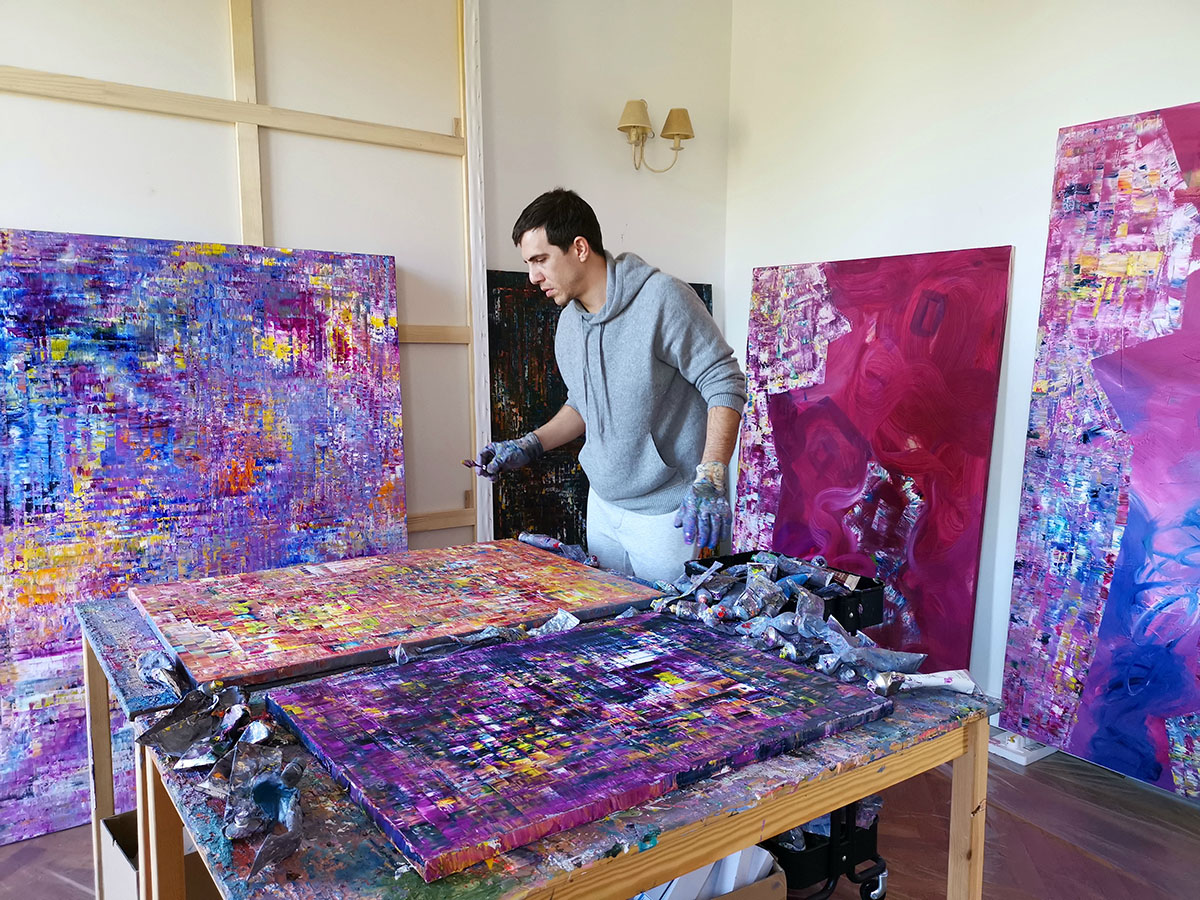


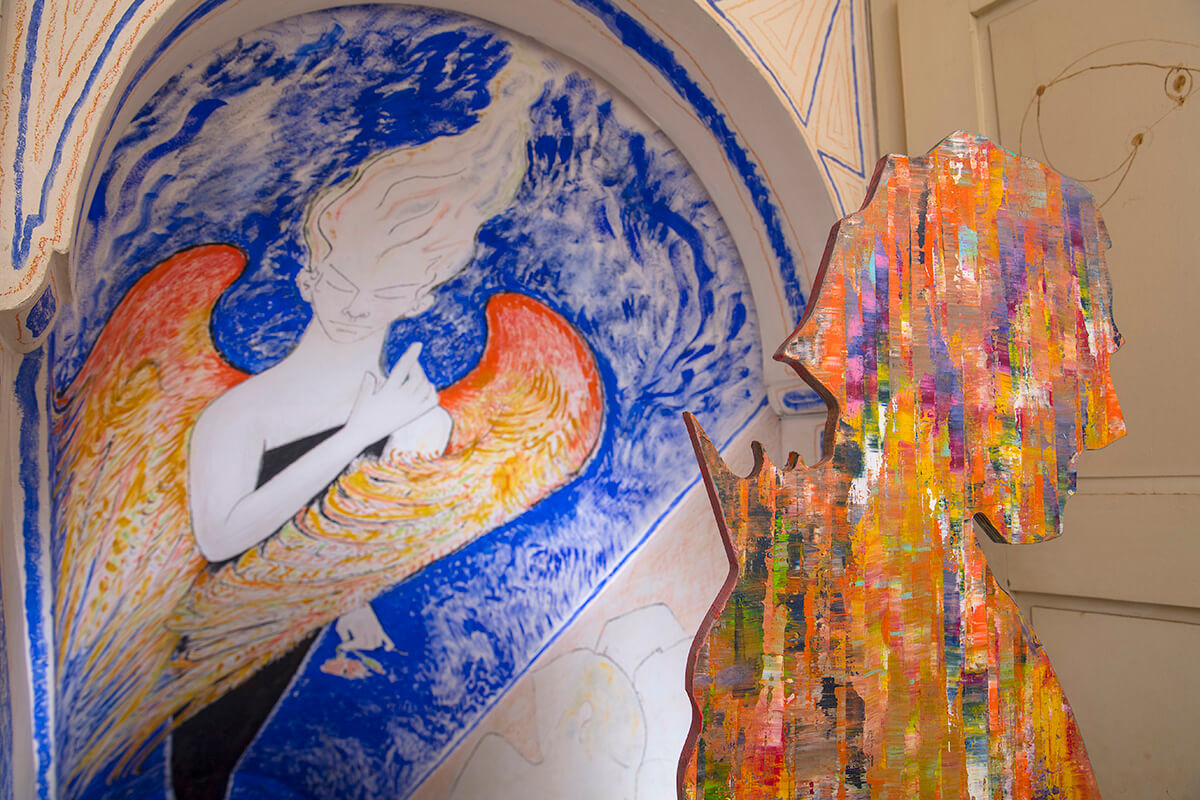


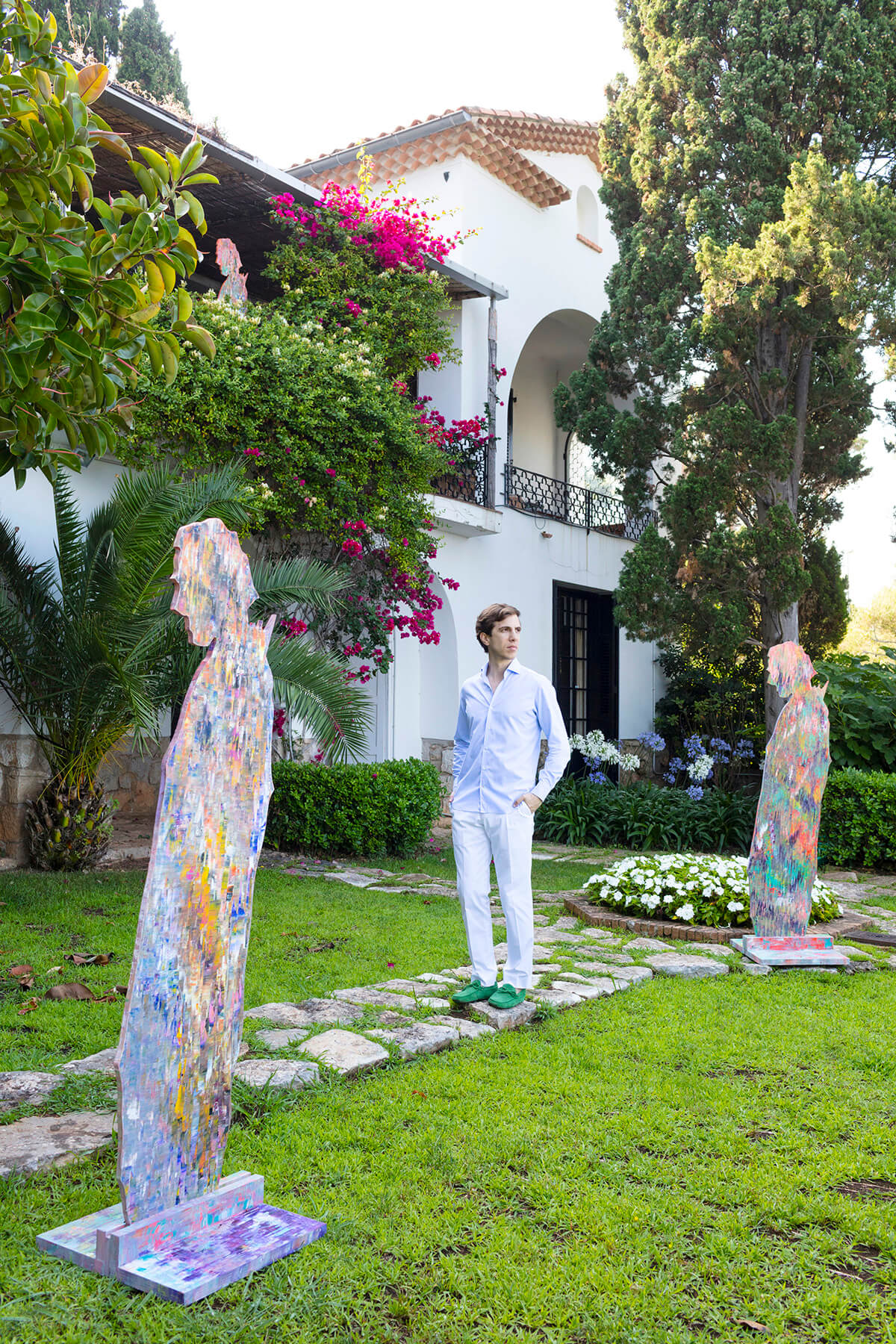



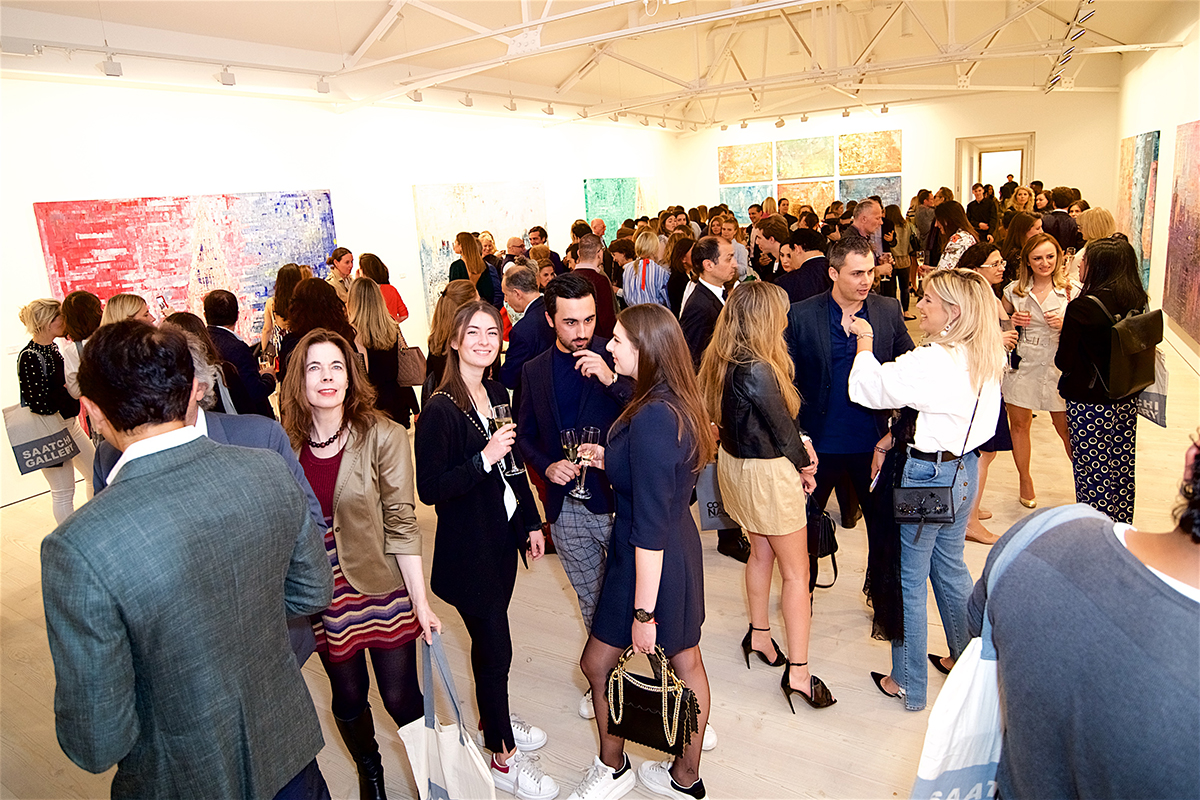







Recent Comments